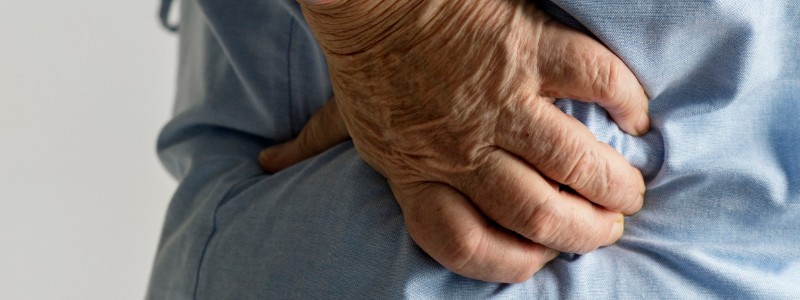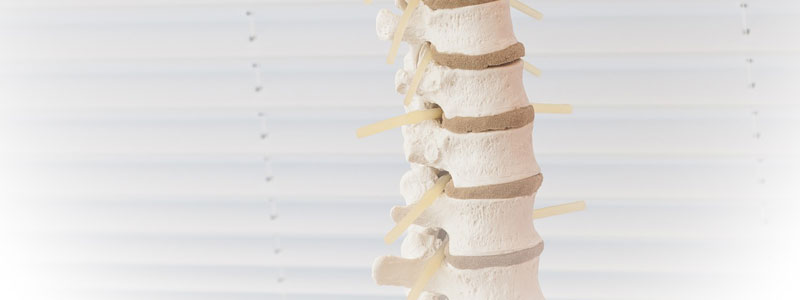Common Back Injuries After a Car Accident

Any back injury can have devastating ramifications. This is why so many workplaces stress safe job practices, why physicians emphasize proper posture to keep the muscles that support your back strong, and why you need to pay attention to your back and spine following a car accident.
Back injuries are common after a car accident. Some are minor and can be treated with medication and physical therapy. Others require immediate medical attention to prevent life-ruining complications.
Whiplash

Whiplash is extremely common after a car accident. It is a soft tissue injury that happens when the force of a collision forces your neck muscles to strain with sudden or severe movement.
Symptoms—most of which can be treated with physical therapy, putting them on the lower end of the severity spectrum—of whiplash can include:
- Headache
- Stiffness
- Shoulder or back pain
- Dizziness
- Burning or prickling
- Hoarseness
- Problems chewing and swallowing
Since these can be symptoms of numerous conditions, you must get doctor clarification on the exact nature of your back injury. You ought to do this anyway, but this is especially the case with whiplash.
In addition, though it may not seem worthwhile to file a claim for soft tissue injuries such as whiplash, you should consider filing a personal injury claim if you experience whiplash because even minor soft tissue injuries can affect your ability to work and enjoy life.
Lumbar Sprain

Like whiplash, lumbar sprains are a result of the unnatural movements that occur during car accidents. The ligaments in your lower back may tear, causing you to experience the same symptoms as your neck would in the event of whiplash: stiffness, pain that may spread up your back or down your buttocks, and potential muscle spasms.
The lower part of the back provides stability for the upper part and rest of the body. Because of the position of these strains, it can be hard to perform strenuous activities after these injuries. A lumbar sprain can affect your ability to walk, lift, and even sit normally. You may have to stay out of work for a few days or weeks during healing.
Lumbar sprains may not show up on imaging tests, so you’ll need counsel from your doctor to verify whether or not your back injury symptoms are a result of your crash or other factors. Luckily most lumbar sprains are treatable with painkillers, physical therapy, and rest. If your pain persist for more than a few weeks, intensive treatment may be needed.
Herniated Discs

Sacs of fluid provide buffers between the discs in your spine. When one of these discs bursts, it may pinch nerves or allow the bones to grind against each other. You are most likely to get a herniated disc in your lumbar region, or lower back.
Depending on the severity of the herniation, you may be able to get by with only pain medication and physical therapy. However, many of these cases require surgery; either to remove the herniated disc(s) or to mitigate pressure on the spinal column.
Cauda equina syndrome is a rare and serious condition that may be caused by a herniated disc. Cauda equina syndrome causes the following:
- Bowel and bladder disturbances
- Low back pain
- Numbness in the groin
- Loss of sensation in the lower extremities
- Pain that continually worsens
- The absence of reflexes in the lower extremities
- Weakness or numbness in one or both legs
For treatment to be successful, it must occur within 48 hours of the development of cauda equina symptoms. To resolve the problem, your herniated disc may have to be surgically removed.
But surgery may not fully repair the herniated disc and could cause further complications that leave you unable to work for an extended period of time. If that’s the case, you could recover money for your medical bills and lost wages through a personal injury claim.
Spinal Column Injuries

A severe car accident may cause an injury to your spinal column, resulting in a back fracture. There are 3 main categorizations of back fracture injuries: flexion, extension and rotation fractures.
- Flexion fractures can be treated by wearing a back brace and engaging in physical therapy. Certain unstable burst fractures that consist of significant fractures, angulation or bending at the place of injury, or substantial nerve injury may require decompression surgery.
- Extension fractures can be treated non-surgically, provided there are no injuries to the posterior ligaments of the spine. But if those ligaments are damaged, surgery is often necessary. Also, if the fracture goes through the entire disk, surgery is performed to stabilize the site of the fracture.
- Rotation fractures may require surgery in cases that involve spinal cord and nerve damage. But as this type of spine injury is usually associated with high-energy events, there are other more severe, sometimes life-threatening injuries that must be treated first.
Damage to your spinal column may injure your spinal cord, which is housed inside.
Spinal Cord Injuries

Spinal cord injuries are one of the most severe traumas your body can sustain, and almost always require immediate medical attention. Also, since the spinal cord is connected to every other nerve in your body, injuries anywhere on the cord can result in pain in spots you wouldn’t think would be affected, such as the legs and feet.
Should the injury prove truly severe, a wounded spinal cord can result in short or long-term paralysis. Paralysis is the most severe result of an injured spinal cord.
Because of the lack of mobility and circulation that result from a spinal cord injury, a number of secondary problems can be common. Unfortunately, these problems can be persistent, and it takes the dedication of your medical team and perseverance on your part to properly address these issues on an ongoing basis.
Some common secondary problems associated with spinal cord injuries include:
- Muscle contractures (involuntary muscles contractions and spasms)
- Deconditioning (weakened and atrophied muscles as a result of little or no use)
- Pressure ulcers (such as bed sores, caused by lack of movement or repositioning in a bed or wheelchair)
- Respiratory infection
- Bladder and bowel issues
- Blood clots
In the case of long-term symptoms—stretching even to a lifelong span—your should make sure your injury settlement reflects the costs of your condition.
Cell Death after a Spinal Cord Injury
It is critical that you seek out medical care as soon as possible after a spinal cord injury. Within days or weeks after the injury you may regain some mobility as swelling decreases, but it is also during this time that apoptosis, or cell death, occurs.
Apoptosis is a natural function of the body, in which unhealthy cells are forced to shrink and implode. It can also be extremely detrimental to the healing process after a spinal cord injury.
This is because in addition to killing damaged spinal cord cells, this process also strips away at myelin, which speeds up the spinal cord’s nerve impulses. When this happens, communication between the brain and spinal cord is hampered even further, which may slow signs of progress.
With the proper emergency attention, treatment and ongoing medical care, spinal cord injury victims often are able to find ways to adjust back to daily life. Despite this, the challenges associated with recovery can be immense.
When someone else’s negligence caused your car accident in Indiana and resulting spinal cord injury, you may be able to hold them accountable for your ongoing medical issues and challenges through a personal injury claim.
Cost of Back Injuries After a Car Accident

Back injuries require a myriad of tests even before the treatment phase: MRIs, nerve tests, and CT-scans are generally what you should expect just in the diagnosis stage.
If your injury requires long-term treatment, you’re looking at costs that stack up quickly, both with respect to tests and therapy, but also with potentially lost wages as a result of missing work or losing your job altogether.
It’s not uncommon for insurance companies to try to pin your injuries on some other condition that may have caused them. Arthritis, age, poor posture, lack of exercise, and improper lifting technique can also cause these types of injuries. Don’t be surprised if your insurance tries to get out of a fair settlement by claiming your condition existed prior to the accident.
Help from an Indiana Personal Injury Attorney
You can only settle once. If you wait to get treatment, or if you settle too quickly, you may not receive enough money to adequately cover all of medical bills.
If the insurer offers you an insufficient settlement amount for your injuries and damages, you have the option to file a lawsuit. Indiana has a two-year statute of limitations for car accident cases, so act quickly after an accident to avoid being barred from recovery.
If a back injury has placed you or someone you know in a difficult situation following a car accident, Hensley Legal Group may be able to help. Call us today or contact us online for a free conversation about your claim.